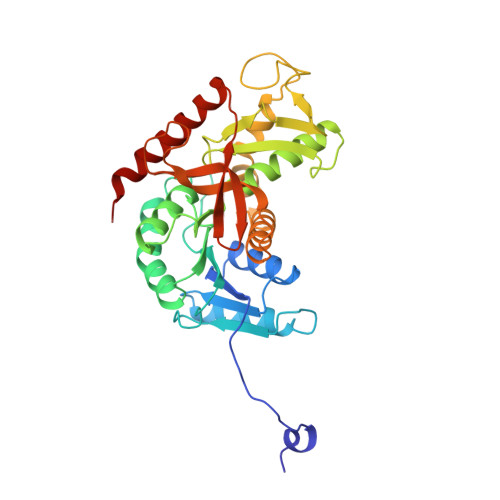Design and synthesis of new enzymes based on the lactate dehydrogenase framework.
Dunn, C.R., Wilks, H.M., Halsall, D.J., Atkinson, T., Clarke, A.R., Muirhead, H., Holbrook, J.J.(1991) Philos Trans R Soc London,ser B 332: 177-184
- PubMed: 1678537
- DOI: https://doi.org/10.1098/rstb.1991.0047
- Primary Citation of Related Structures:
9LDB, 9LDT - PubMed Abstract:
Analysis of the mechanism and structure of lactate dehydrogenases is summarized in a map of the catalytic pathway. Chemical probes, single tryptophan residues inserted at specific sites and a crystal structure reveal slow movements of the protein framework that discriminate between closely related small substrates. Only small and correctly charged substrates allow the protein to engulf the substrate in an internal vacuole that is isolated from solvent protons, in which water is frozen and hydride transfer is rapid. The closed vacuole is very sensitive to the size and charge of the substrate and provides discrimination between small substrates that otherwise have too few functional groups to be distinguished at a solvated protein surface. This model was tested against its ability to successfully predict the design and synthesis of new enzymes such as L-hydroxyisocaproate dehydrogenase and fully active malate dehydrogenase. Solvent friction limits the rate of forming the vacuole and thus the maximum rate of catalysis.
Organizational Affiliation:
University of Bristol Molecular Recognition Centre, School of Medical Sciences, U.K.

















